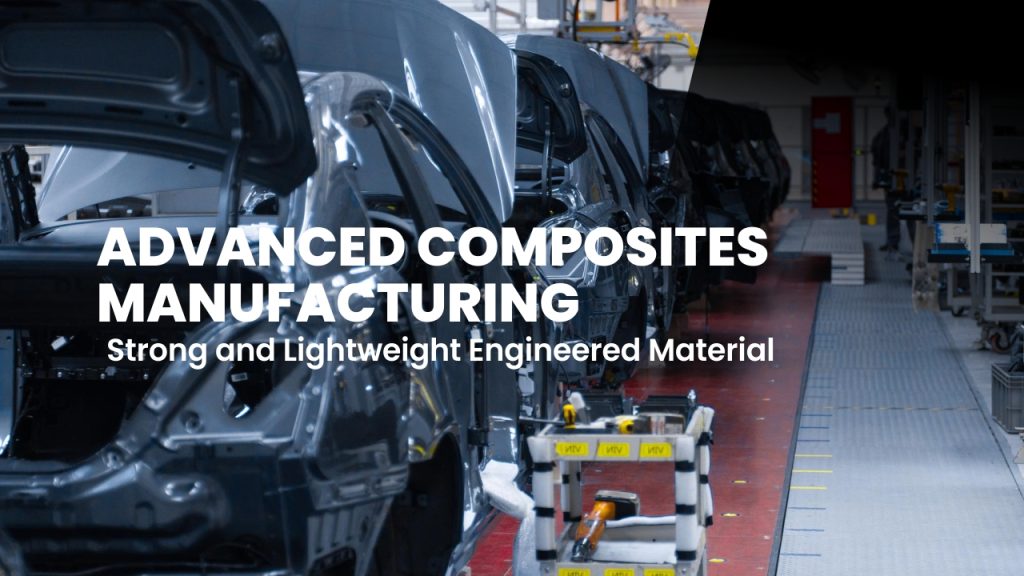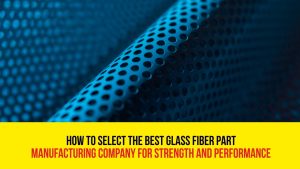If you are enthusiastic to unfurl the fascinating world of advanced composites manufacturing and are inquisitive to know about the materials that make vehicles lighter and airplanes efficient and stronger, then you will enjoy reading this post. With lots of innovation and development happening in the modern engineering field, advanced composites have emerged as a key component. In modern engineering applications where high performance, durability, and lightweight features are vital advanced composites are strongly penetrating the industries. The use of advanced composites is driving advancement and empowering industries with high-performance products.
Advanced Composites – Strong and Lightweight Engineered Material
Advanced composites manufacturing involves combining two or more constituent materials having different physical or chemical properties. The resulting composite has different characteristics from the individual components. In advanced composites, each component plays its part in making something better. Common advanced composites include carbon fiber, glass fiber, nano composites, and fiber-reinforced plastics. These materials are renowned for their strength, lightweight, and resistance to environmental factors and find application in everything from aerospace and automotive industries to sports equipment and even medical devices.
The Magic behind Manufacturing Advanced Composites
Advanced composite materials are distinguished by their exceptional specific strength and stiffness. When paired with automated manufacturing processes, they enable the production of composite structures that are both lightweight and cost-efficient. The process of manufacturing advanced composites is complex, involving several techniques and steps such as:
- The initial step is selecting the right fibers and resins. Carbon fiber is a preferred choice due to its high strength-to-weight ratio. The resin matrix, often epoxy, holds the fibers together and transfers load between them.
- Next is the layup process in which fibers are arranged in the desired orientation, either manually or through automated systems. The orientation of the fibers significantly affects the strength and stiffness of the final product.
- Once the fibers are laid out and the resin is applied, the composite needs to be cured. This is often done in an autoclave, high-pressure oven that solidifies the resin, binding the fibers together and forming a solid, durable structure.
- After curing, the composite part is often machined to its final dimensions. This can involve cutting, drilling, and sanding to ensure precision and quality.

Cutting-Edge Techniques of Advanced Composite Manufacturing
The field of advanced composites manufacturing is constantly evolving, with new techniques pushing the boundaries of what’s possible.
3D Printing – Yes, even advanced composites can be 3D printed. This technique allows for complex geometric patterns that would be difficult to achieve with traditional methods. It’s particularly vital for rapid prototyping and customized parts.
Automated Tape Laying – This process uses computer-controlled machines to lay down composite tapes in precise patterns. It is consistent and quick compared to manual layup, making it ideal for large-scale production.
Out-of-Autoclave Curing – Traditional autoclaves are expensive and energy-intensive. This technique uses alternative methods like vacuum bagging and heated presses, reducing costs and environmental impact while still delivering high-quality results.
Real-World Applications
The real magic of advanced composites lies in their applications. Some of the areas in which advanced composites are used include:
Aerospace – Modern aircraft are full of composite materials. They reduce weight, which improves fuel efficiency and reduces emissions.
Automotive – From Formula-1 cars to electric vehicles, composites help make cars lighter and stronger. This translates to better performance and improved fuel economy.
Sports Equipment – Ever wonder why tennis rackets, golf clubs, and bicycles are so much lighter and stronger today? It is because of the advanced composites that enhance performance while reducing fatigue for athletes.
Renewable Energy – Wind turbine blades are often made from fiberglass composites. Their strength and durability allow them to withstand harsh weather conditions while being lightweight enough to be efficient.
Looking Ahead
The future of advanced composite manufacturing is incredibly bright. Researchers are exploring new materials like nano composites and bio-based resins. These innovations promise to deliver even better performance and sustainability. With consistent innovation advanced composites are set to play a pivotal role in shaping the technologies of tomorrow. So, whether you’re an engineer, a designer, or just a curious mind, keep an eye on this space. The world of advanced composites is only just beginning to unfold its full potential.








